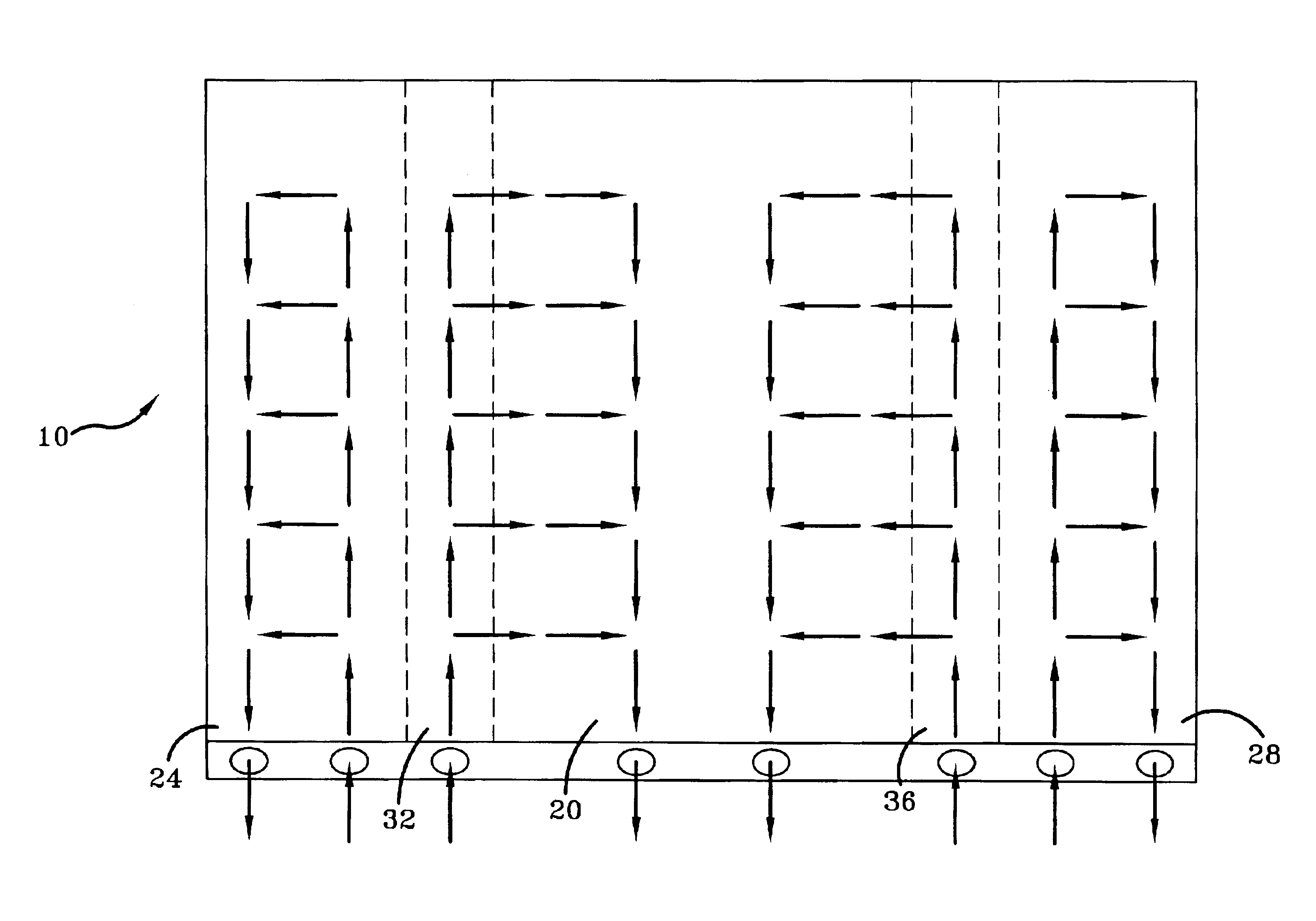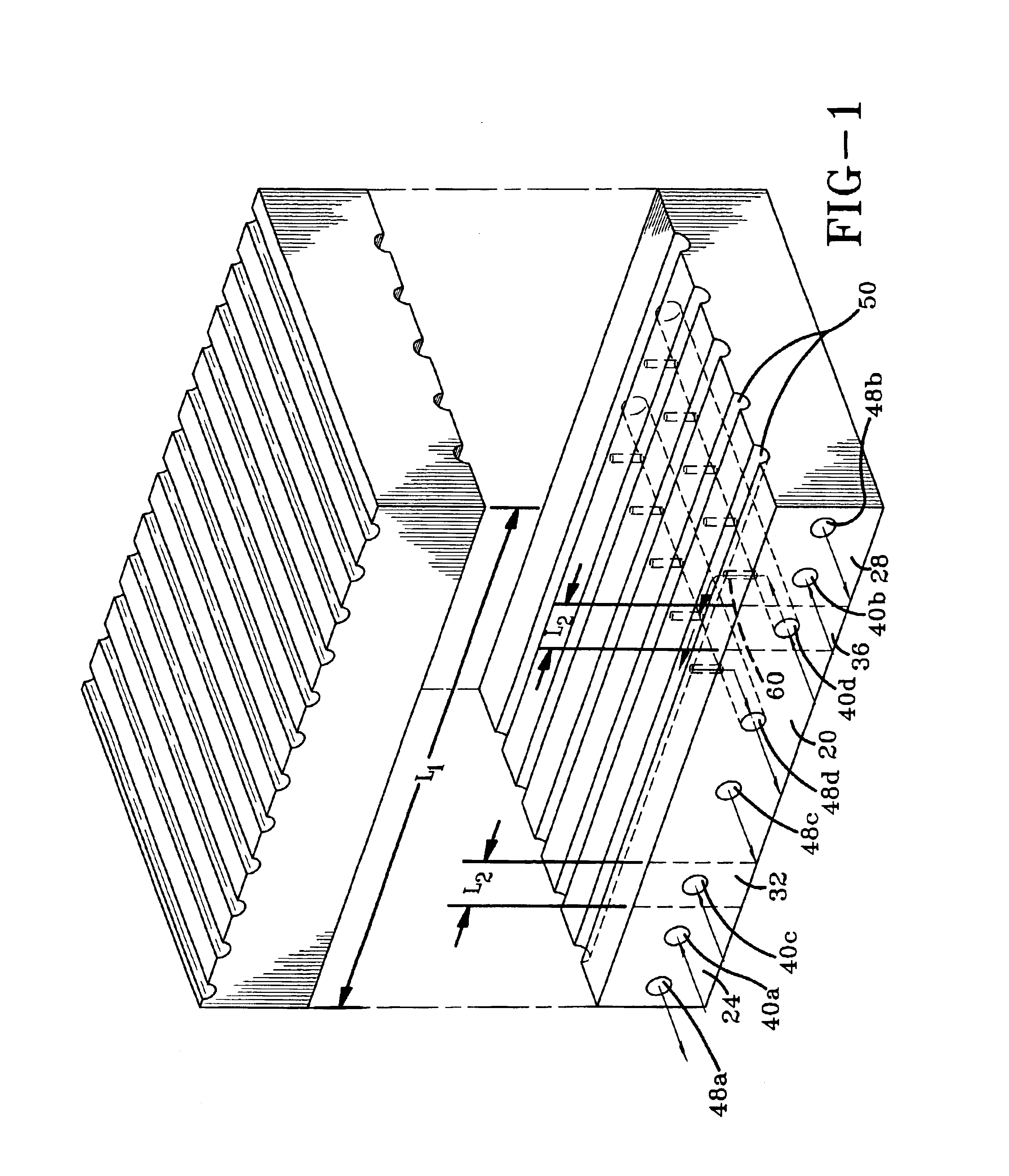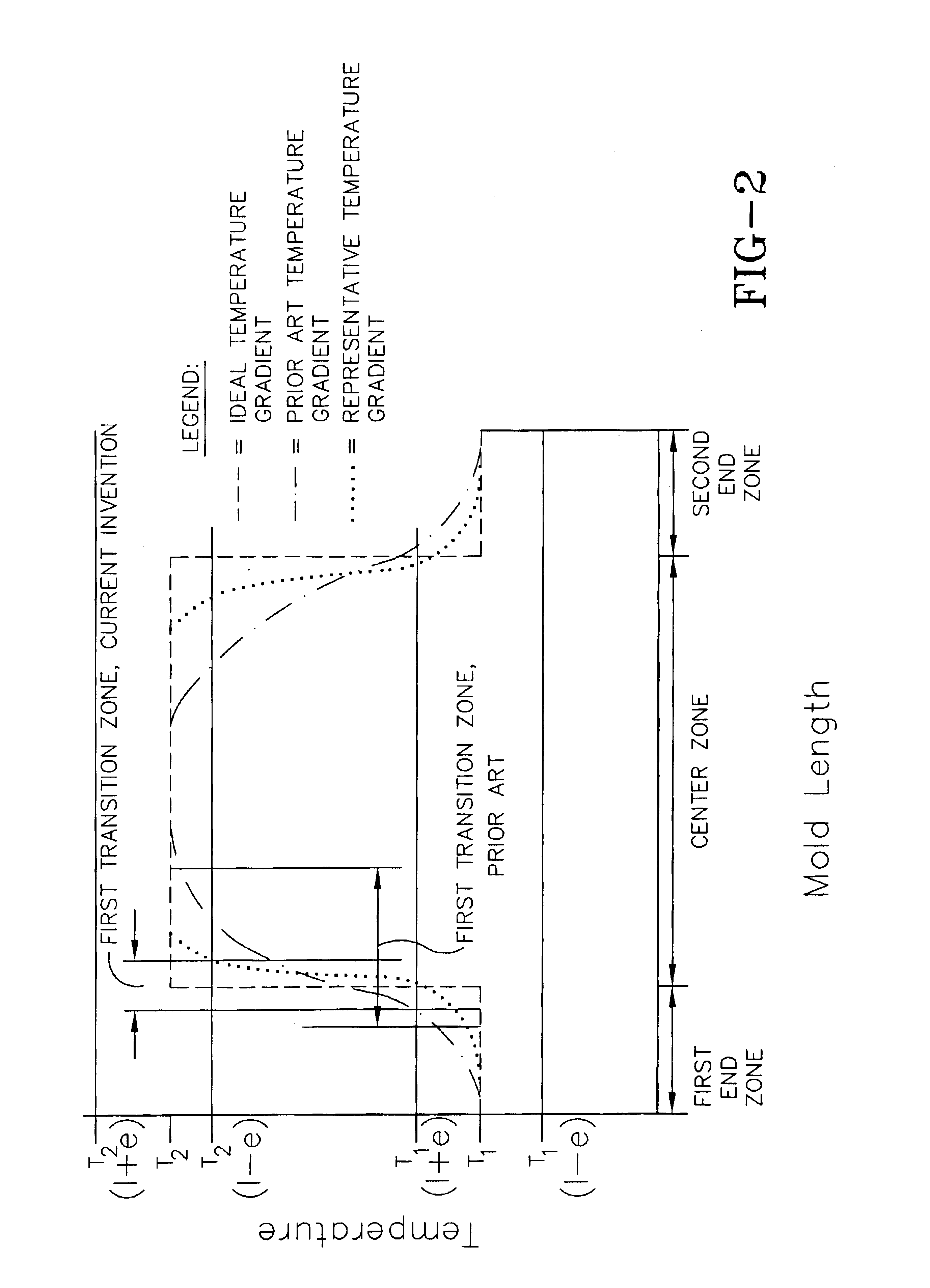Self-leveling high heat transfer mold
a mold and heat transfer technology, applied in the field of planar mold design, can solve the problems of variable tooth pitch within one molded section of the belt, poor heat conduction, unacceptable over cure, etc., and achieve the effect of simple mold design, quick and easy adjustment, and minimized over cure risk
- Summary
- Abstract
- Description
- Claims
- Application Information
AI Technical Summary
Benefits of technology
Problems solved by technology
Method used
Image
Examples
Embodiment Construction
[0045]Referring now to the drawings wherein the showings are for purposes of illustrating a preferred embodiment of the invention only and not for purposes of limiting the same, FIG. 1 shows a mold half 10A. The principles governing the heating of a mold will be explained with reference to mold half 10A for the sake of simplicity. A mating mold half (not shown in this view) utilizes similar principles. A mold for curing a belt slab includes a length, L1, which in use is disposed along the circumference of the belt. The mold is characterized by a center zone 20, a first end zone 24, a second end zone 28, a first transition zone 32 disposed generally between the first end zone 24 and the center zone 20, and a second transition zone 36 disposed generally between the second end zone 28 and the center zone 20. Each of the transition zones 32, 36 has a mold length L2, which is less than L1. Transition zone length L2 is also less than the length of the center zone 20. As shown in FIG. 1, t...
PUM
| Property | Measurement | Unit |
|---|---|---|
| length L1and | aaaaa | aaaaa |
| width | aaaaa | aaaaa |
| length L2 | aaaaa | aaaaa |
Abstract
Description
Claims
Application Information
 Login to View More
Login to View More - R&D
- Intellectual Property
- Life Sciences
- Materials
- Tech Scout
- Unparalleled Data Quality
- Higher Quality Content
- 60% Fewer Hallucinations
Browse by: Latest US Patents, China's latest patents, Technical Efficacy Thesaurus, Application Domain, Technology Topic, Popular Technical Reports.
© 2025 PatSnap. All rights reserved.Legal|Privacy policy|Modern Slavery Act Transparency Statement|Sitemap|About US| Contact US: help@patsnap.com



